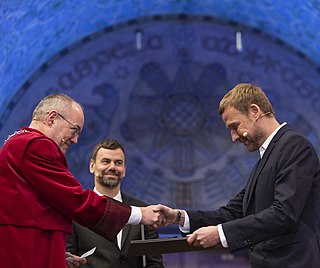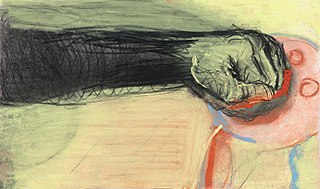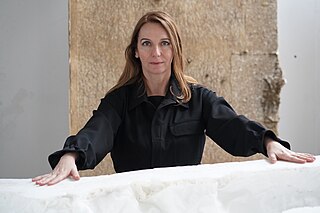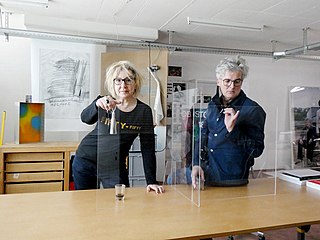List of kunsthalles
This list contains the exhibition venues, museums, and art societies that can be considered as kunsthalles.
Austria
- Kunsthaus Graz, Graz
- Kunsthalle Krems (foundation)
- Kunsthalle Wien; see also Museumsquartier, Vienna (municipal)
- KunstHausWien, Vienna
- Secessionsgebäude (Secession Building), Vienna
Belgium
- Kunsthal Gent , Ghent
- Kunsthalle Lophem, Loppem
- Kunsthal Extra City , Antwerp
Czech Republic
- Kunsthalle Praha, Prague
Denmark
- Kunsthal Aarhus, Aarhus
- Kunsthal Charlottenborg, Copenhagen
- Nikolaj Kunsthal, (previously known as Kunsthallen Nikolaj), Copenhagen
Estonia
- Tallinn Art Hall, Tallinn (Tallinna Kunstihoone)
Finland
- Kunsthalle Helsinki, Helsinki (Helsingin Taidehalli)
- Kunsthalle Kohta, Helsinki (Kohta Taidehalli)
- Kunsthalle Turku, Turku (Turun Taidehalli)
France
- La Kunsthalle Mulhouse, Alsace
- Château de Montsoreau-Museum of Contemporary Art, Montsoreau
Georgia
- Kunsthalle Tbilisi, Tbilisi
Germany
- Kunsthalle Baden-Baden (state-run)
- Kunsthalle Bielefeld — with permanent collection (municipal)
- Kunsthalle Bonn (German federal)
- Kunsthalle Bremen — with a permanent collection (Kunstverein in Bremen)
- Kunsthalle Bremerhaven (Kunstverein Bremerhaven)
- Kunsthalle Darmstadt (Kunstverein Darmstadt)
- Kunsthalle Düsseldorf (municipal)
- Kunsthalle in Emden — with permanent collection (foundation)
- Kunsthalle Erfurt (municipal/Erfurter Kunstverein)
- Schirn Kunsthalle Frankfurt, Frankfurt (municipal)
- Kunsthalle Hamburg — with permanent collection, see Hamburger Kunsthalle (state-run)
- Kunsthalle Göppingen (municipal/Kunstverein Göppingen)
- Kunsthalle Karlsruhe — with permanent collection (state-run)
- Kunsthalle Fridericianum Kassel, Fridericianum (municipal)
- Kunsthalle zu Kiel — with permanent collection (state-run)
- Kunsthalle Königsberg, now a market in Kaliningrad
- Kunsthalle der Sparkasse Leipzig (foundation)
- Kunsthalle Kunstverein Lingen (Kunstverein Lingen)
- Kunsthalle Mainz , Mainz
- Kunsthalle Mannheim — with permanent collection (municipal)
- Kunsthalle der Hypo-Kulturstiftung, München
- Kunsthalle Münster , Münster
- Kunsthalle Nürnberg (municipal)
- Kunsthalle Rostock, Rostock
- Kunsthaus Tacheles, Berlin
- Kunsthalle Tübingen — with permanent collection (municipal/foundation)
- Kunsthalle Wilhelmshaven (municipal/Verein der Kunstfreunde Wilhelmshaven)
Hungary
- Kunsthalle Budapest, Budapest, Hungary
Italy
- AnonimaKunsthalle, Varese
- Kunsthalle Bozen, Bolzano
- Kunsthalle Meran, Merano
Netherlands
- Kunsthal KAdE , Amersfoort
- Kunsthal Rotterdam, Rotterdam
Norway
- Bergen Kunsthall, Bergen
- Kunsthall Oslo, Oslo
- Kunsthall Stavanger, Stavanger
- Kunsthall Trondheim, Trondheim
Poland
- Kunsthalle Breslau/Wrocław
- Kunsthalle Danzig/Gdańsk
Portugal
- Kunsthalle Lissabon, Lisbon, Portugal
Romania
- Kunsthalle Bega/Timișoara
Slovakia
- Kunsthalle Bratislava, Bratislava
- Kunsthalle Košice, Košice
Sweden
Switzerland
- Kunsthalle Arbon
- Kunsthalle Basel (Basler Kunstverein)
- Kunsthalle Bern (Verein der Kunsthalle Bern)
- Fri Art Kunsthalle , Fribourg
- Neue Kunst Halle St. Gallen (foundation)
- Kunsthalle Zürich (municipal/Verein Kunsthalle Zürich)
- Kunsthaus Zürich
United States
- New Museum, New York City, New York
- Aspen Art Museum, Aspen, Colorado [3]
- Institute of Contemporary Art Archived 2020-09-30 at the Wayback Machine , San Jose, California
- MassArt Art Museum, Boston, Massachusetts
- Kunsthalle Detroit, Michigan
- Contemporary Arts Museum Houston, Texas
- Portsmouth Museum of Art
- Dallas Contemporary Texas
- MOCA Ohio
- Institute of Contemporary Art, Philadelphia, Pennsylvania
- The Renaissance Society at the University of Chicago
- Contemporary Art Museum St. Louis
- Center for Maine Contemporary Art, Rockland, Maine
- Blaffer Art Museum University of Houston, Texas
- Moss Arts Center Virginia Tech, Blacksburg, Virginia
- Sarasota Art Museum Ringling College of Art and Design, Sarasota, FL






